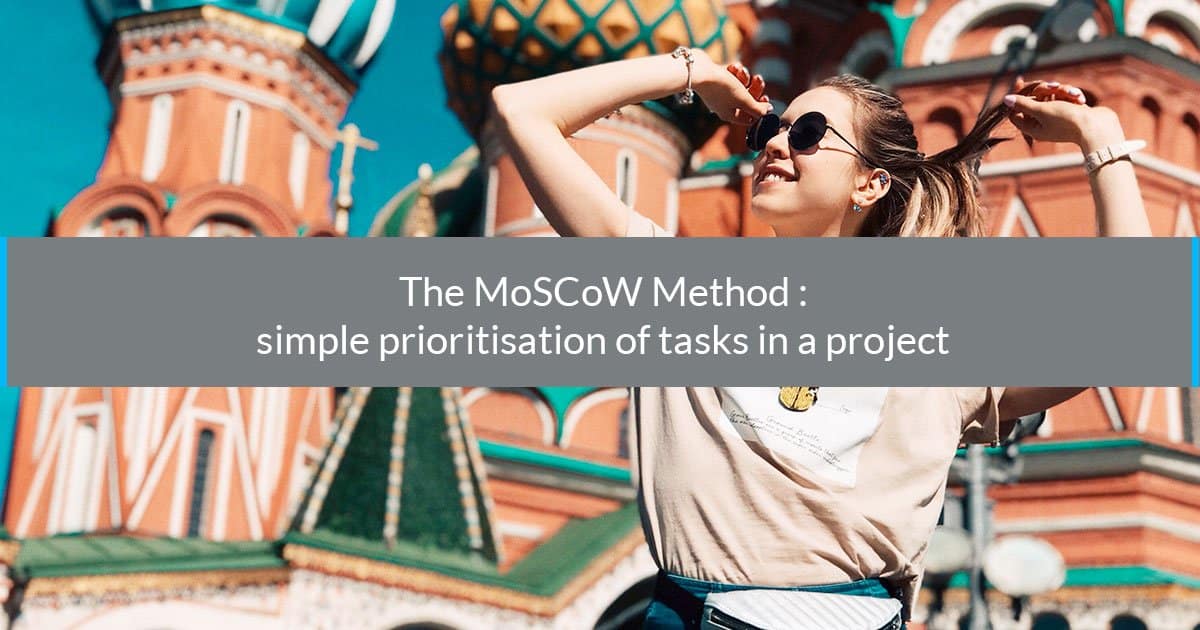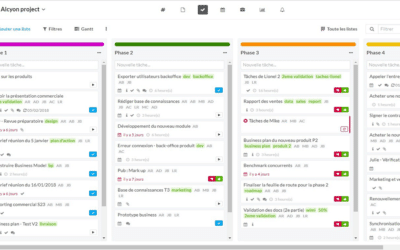Every one of our workdays is like a race against the clock. Time is a precious and elusive resource which tends to slip between our fingers. At the end of the day, we are too often frustrated at not having finished the tasks that we were responsible for in time. You can fix this from now on thanks to our task management software.
In order to avoid this feeling of frustration and powerlessness in the face of time passing, it is crucial to be organised and to prioritise tasks by order of urgency and/or importance. For this, two main methods exist: the Eisenhower Matrix and the MoSCoW Method. In this article, we present to you the MoSCoW Method.
The Principal
Dani Clegg, consultant at Oracle UK, invented the MoSCoW Method in 1994.
When you are managing a project, you should know the demands and priorities of your customer. The MoSCoW Method helps you to know what you must do first, what you should do later and what you do not need to do.
The capital letters of the MoSCoW acronym correspond to four categories:
- M for Must Have (vital) : these tasks are indispensable to the success of the project. They should therefore be carried out first and this is non-negotiable.
- S for Should have (essential) : this categories regroups the important tasks to carry out after the “Must have” tasks are finished. They bring a real added value to the project and contribute to reaching objectives, but unlike the ‘Must haves’, they can deferred in time.
- C for Could have (comfort) : these are the comfort tasks that will be accomplished as long as it is possible, if there is time once the tasks from the first two categories are finished. Their carrying out should not affect the other tasks.
- W for Won’t have but would like in the future (luxury) : these are the secondary tasks that we would like to carry out one day, but which we leave aside for now, due to lack of budget and/or lack of time.
You have probably noticed that the ‘o’ in the MoSCoW acronym does not have a meaning. It only serves to make the method easier to pronounce and to memorise.
This prioritisation technique is generally used in agile methodologies. You should prioritise the tasks for each iteration, and not on the entire project. At every new iteration, we redefine which tasks rank in each category.
The advantages and limitations
There are three main advantages to this method:
- Firstly, the way of naming different categories is much more pertinent and facilitates the prioritisation of tasks
- Secondly, the last category (Won’t have) allows you to note the customer’s demands and to register them to integrate them in different versions or in later tasks
- Finally, prioritising your tasks allows you to divide your resources adequately
It is important to maintain a certain balance in the categories in order to avoid all the tasks being priorities and ending up in the “Must have” category. The risk is that the new and the more interesting demands to carry out pass for priorities when they are not necessarily that. On the other hand, the most important tasks like reworking, improvements and maintenance can end up in the category “Could have” or “Won’t have”.
Another limitation is that there is not a precise logic for categorising similar tasks. What determines that a task should be classed as “Must have” rather than “Should have” and vice versa?
How to do it
Follow these three steps to put the MoSCoW method in place.
1. List the elements to prioritise
Start by listing all the tasks to carry out. During this first stage, it is imperative that all of the stakeholders of the project are represented (the customer, the project team, the suppliers and service providers, the public authorities, etc.).
For more efficiency, directly list your tasks in your project management tool. Write everything that comes to mind, even those that you consider as accessories, in order to not forget anything and to free your mind to be more productive.
Do you not have project management software? Why not adopt one today? A tool such as Wimi facilitates collaboration and communication within your team. Try it for free for 14 days.
2. Classify them
Once your list is ready, sort and categorise each of the elements listed by using the MoSCoW method.
What are the “Must haves”, the tasks to carry out first to ensure the success of your project? What are the “Should haves”, the important tasks to execute once the “Must haves” are finished? Which tasks fall in the “Could have” category and will be done once those of the other two earlier categories have finished? Finally, which tasks belong to “Won’t have” and will not be carried out for now?
Make sure that the four categories are easy to identify using colour code, for example. In this way, you will be able to recognise the most important from the secondary tasks in one glance.
Everybody should participate in this discussion and it will be necessary to find a good balance between the expectations and demands of each stakeholder.
3. Validate the suitability of the classification
No, all the tasks in a project are not priorities. If you end up with a large number of tasks in the first two categories (“Must have” and “Should have”), make sure that the workload is feasible and that the deadlines, the budget and the capacities of your resources are respected. If this is not the case, sort the “Must haves” again by ensuring that the tasks really are essential to the success of the project.
Conclusion
Management of priorities is essential to reach your objectives and guarantee the success of a project. You can use the MoSCoW method all the time in a project: once a week, at each new iteration or everyday so that each member of the team knows their priorities for the day. If you are late, whether unforeseen or because of a problem, do not hesitate to take another look at your priorities.










